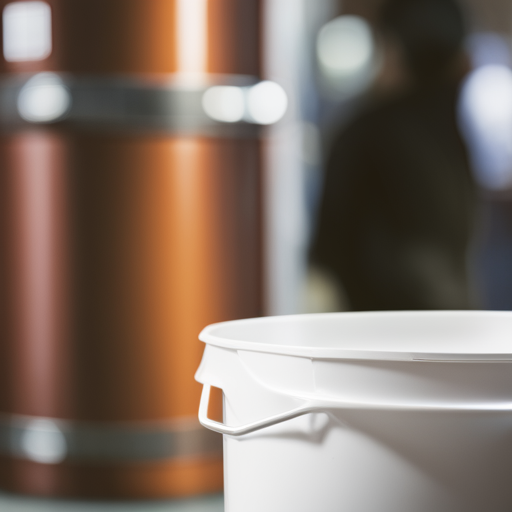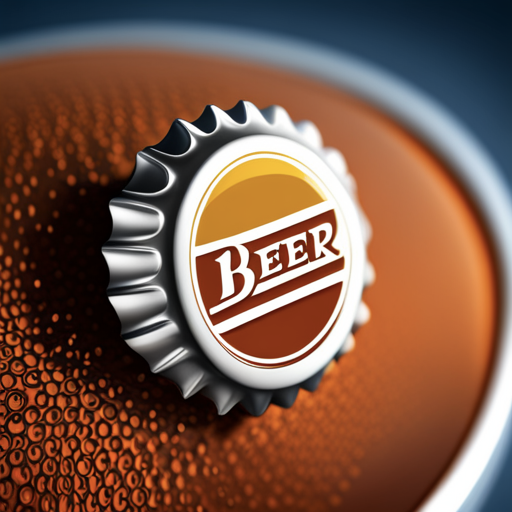Have you ever dreamed of savoring your own homebrewed bottle beer, bottled to perfection and ready to share with friends and family? Well, it’s time to make that dream a reality! By mastering the art of bottling beer, you’ll ensure that your beer is properly carbonated, conditioned, and stored for optimal flavor and enjoyment. So let’s dive into the world of bottle beer bottling and learn the essentials, from preparing your beer for bottling to troubleshooting common issues.
TL;DR
Prepare adequately and take consistent gravity readings prior to bottling.
Gather essential equipment, establish a sanitized workspace, select & prepare beer bottles for optimal quality.
Calculate priming sugar amounts correctly and practice proper storage techniques in order to avoid bottle bombs.
Preparing for Bottling

Before you start bottling your precious brew, it’s crucial to ensure that you’ve completed primary fermentation, gathered the necessary equipment, and set up a clean workspace. This will not only protect your beer from contamination, but also help prevent bottle bombs and ensure a successful bottling day.
Remember, commercial breweries take great care in their bottling process, and so should you!
Completing Primary Fermentation
Primary fermentation is where the magic of your beer’s flavor and alcohol content begins. Yeast metabolizes the fermentable sugar in the wort, producing alcohol and carbon dioxide. To avoid bottle bombs and over-carbonation, it’s essential to ensure that primary fermentation is complete before bottling your beer.
To verify this, take consistent final gravity readings with a hydrometer. Patience is key – it’s better to wait a bit longer than to end up with exploding bottles and wasted brew.
Gathering Equipment
To bottle your beer, you’ll need some essential equipment: bottles, caps, a cap, a bottling bucket, tubing, and a bottling wand. Additionally, you may need a racking cane and hose, a separate container for mixing priming sugar, and a bottle filler.
It’s important to clean and sanitize all equipment before use, as this will ensure a successful bottling process and prevent contamination. With the right equipment in place, you’re one step closer to enjoying your bottled beer!
Setting Up Workspace
Establishing a clean and orderly workspace for bottling beer is essential to guarantee an efficient, hygienic process, and to avert spills and mishaps. Be sure to sanitize not only the bottles but also the bottling bucket and siphon.
When filling the bottles, use a siphon to transfer the beer from the bottling bucket to the bottles, and cap them securely with a bottle capper for a proper seal.
Bottle Selection and Preparation

Choosing the right beer bottles for your beer is just as important as the bottling process itself. You’ll need to consider the type of bottle (glass or plastic), as well as the size and color. Additionally, it’s crucial to ensure that your bottles are properly cleaned and sanitized to prevent contamination and off-flavors.
So let’s explore the world of beer bottles and beer styles, and learn how to select and prepare them for your homebrew.
Types of Beer Bottles
When it comes to beer bottles, you have a few options: glass or plastic. Glass bottles are durable, reusable, and offer better protection against light and oxygen. However, they’re heavier and more expensive than plastic bottles, which are lightweight, cost-effective, and easy to clean and sanitize.
The choice ultimately depends on your personal preferences and brewing needs. For highly carbonated beers like Belgian ales, opt for larger bottles to provide ample space for foam growth and prevent potential bottle explosions. And remember, always choose dark bottles over clear or green ones to protect your beer from light-induced spoilage.
Cleaning and Sanitizing
Thoroughly cleaning and sanitizing your bottles is crucial to avoid contamination and off-flavors in your beer. A “Jet Bottle Washer” is a handy tool for efficient bottle cleaning, as it attaches to a faucet and cleans the bottle when the valve is activated. For stubborn sediment, use a small bottle brush.
To sanitize your bottles, treat them with a high-quality sanitizing solution like Easy Clean or Star San. It is important to plan ahead. Allow plenty of time for the beer bottles to cool before filling them.
Priming Sugar and Carbonation

Priming sugar is the key to achieving that perfect fizz in your bottled beer. By choosing the right type of priming sugar and calculating the correct amount for your beer, you’ll ensure that your beer is properly carbonated and ready to enjoy.
So let’s delve into the world of priming sugar and learn how it contributes to the carbonation process, as well as the role of priming sugars in this fascinating journey.
Purpose of Priming Sugar
Priming sugar is added to your beer during the bottling process to initiate a secondary fermentation in the bottle, resulting in the production of carbon dioxide (CO2) and natural carbonation of the beer. Measuring the appropriate quantity of priming sugar and dissolving it in boiled water before adding it to your beer is crucial for achieving the desired carbonation level.
With the right amount of priming sugar, you’ll create that satisfying fizz that makes your homebrew truly enjoyable.
Priming Sugar Options
There are several priming sugar options to choose from, including corn sugar (dextrose), table sugar (sucrose), and brown sugar. Each type of sugar can affect the flavor and conditioning time of your beer. For instance, honey can take up to two weeks longer to fully condition than corn sugar.
The choice of priming sugar depends on your personal taste preferences and the desired characteristics of your brew. Different sugars can produce different flavors and aromas, as well as different levels of carbonation.
Calculating Priming Sugar Amounts
To calculate the correct priming sugar amount for your beer, you can use online priming sugar calculators that take into consideration the type of priming sugar used, the desired carbonation level, and the volume of beer to be bottled. It’s essential to get the calculation right, as excessive sugar added during priming can lead to over-carbonation and potentially dangerous exploding bottles.
With the correct amount of priming sugar, you’ll achieve the perfect carbonation level for your bottled masterpiece.
The Bottling Process

Now that you’ve prepared your beer, selected and sanitized your bottles, and calculated the right priming sugar amount, it’s time to bottle your beer! Following proper bottling techniques, such as using a bottling bucket, filling bottles, and capping them securely, will ensure that your homebrew is ready to be enjoyed by all.
So let’s dive into the bottling process and learn how to turn your brew day into a bottling success.
Using a Bottling Bucket
A bottling bucket is an essential piece of equipment for transferring your beer to bottles while ensuring even distribution of the priming sugar solution. To use a bottling bucket, attach a bottle filler to the spigot located near the bottom of the bucket and then fill the bottles.
This method not only makes the bottling process more efficient, but also helps to minimize splashing and oxidation.
Filling Beer Bottles
Filling your beer bottles correctly is crucial to avoid oxidation and ensure proper carbonation. Attach a bottling wand to a siphon and insert it into the bottle. Fill the bottle until the beer reaches the lip, then lift the wand to stop the flow and move to the next bottle.
Remember to leave appropriate headspace in the bottles to allow for carbonation and avoid overfilling.
Capping and Sealing
Once your bottles are filled, it’s time to cap and seal them securely. Using a bottle capper, place a sanitized cap over the top of the bottle and press down on the butterfly sides of the cap to crimp the cap onto the bottle. Inspect the cap for any gaps or signs of leakage to ensure a proper seal.
With your bottles capped and sealed, you’re one step closer to enjoying your own beer, homebrewed to perfection as a finished beer!
Bottle Conditioning and Storage

Bottle conditioning and storage are key components of the beer bottling process, allowing your brew to develop optimal carbonation and flavor. By allowing the appropriate amount of conditioning time and storing your bottles in ideal conditions, you’ll ensure that your beer reaches its full potential.
So let’s explore the world of bottle conditioning and storage, and learn how to create the perfect environment for your brew.
Conditioning Timeframes
The timeframe for bottle conditioning can vary depending on the beer style and other factors, typically ranging from 2-6 weeks. Most ales will reach their peak condition within 2-4 weeks, while some beers may require a bit longer.
Monitoring the carbonation levels by periodically checking bottles and adjusting conditioning time as needed will help you achieve the desired carbonation and flavor profile for your brew.
Ideal Storage Conditions
To ensure the best results for your bottled beer, store them in a dark, temperature-controlled environment (68-80 F). Exposure to light and humidity can lead to beer spoilage, so proper storage is crucial for maintaining the quality and taste of your brew.
By keeping your bottles in ideal conditions, you’ll be rewarded with a delicious, well-conditioned, bottle condition beer that’s ready to be enjoyed.
Troubleshooting Common Issues
Bottling beer can sometimes present challenges, such as over- and under-carbonation or even bottle explosions. By understanding the common issues that can arise during the bottling process, you’ll be better equipped to troubleshoot these problems and ensure that your beer is bottled to perfection.
So let’s take a look at some common bottling issues and learn how to prevent and resolve them.
Identifying Over- and Under-Carbonation
Over-carbonation can result in excessive bubbling, acerbic flavor, and excessive foam, while under-carbonation may cause your beer to taste flat and stale. By periodically checking bottles and adjusting conditioning time as needed, you can monitor carbonation levels and ensure that your beer is carbonated just the way you like it.
Preventing Bottle Bombs and Exploding Bottles
Bottle bombs and exploding bottles can be dangerous and result in a mess of wasted beer. To prevent these issues, ensure that primary fermentation is complete before bottling your beer and calculate the correct priming sugar amount for your brew.
Additionally, use appropriate bottles for high-carbonation brews to withstand the pressure of carbonation. By taking these precautions, you’ll avoid bottle bombs and enjoy your homebrewed beer safely.
Summary
Bottling your own beer can be a rewarding experience, allowing you to savor and share your homebrewed creations. By mastering the art of bottling – from preparing your beer for bottling, selecting and sanitizing bottles, calculating priming sugar amounts, and following proper bottling techniques – you’ll ensure that your beer is properly carbonated, conditioned, and stored for optimal flavor and enjoyment. Cheers to your bottling success!
Frequently Asked Questions
What is a beer bottle called?
A beer bottle is often referred to as the Industry Standard Bottle (ISB) or longneck bottle. It features a standard capacity, height, weight, and diameter and can be reused approximately 16 times.
This iconic container is recognized around the world as a staple of the beer industry.
Is a bottle of beer 12 oz?
Based on common advice, a bottle of beer in the US is 12 fluid ounces. However, depending on where you go, there may be variations of 11.2 ounces to 16.9 ounces.
Ultimately, it depends on location.
What is 12 bottles of beer called?
A 12-pack of beer is commonly referred to as a half case, providing an easy way to purchase and enjoy a tasty beverage. With various types of cases available, you can easily find the right number of cans or bottles for your needs.
Whether you’re looking for a light lager, a hoppy IPA, or a dark stout, there’s a beer for everyone. With a 12-pack, you can sample a variety of styles and find the one you like best.
What is the difference between bottle beer and beer?
Bottle beer is sealed and transported, while draft beer is poured from a keg directly to the glass. The main difference between the two is in the packaging and transportation method.
Though there are various pros and cons to each choice of beer.
Is there a such thing as bottle washer?
Yes, bottle washers do exist, and they come in different types and sizes. Bottle washers are designed to clean various kinds of containers such as beer bottles or lab equipment, and the type and size of the machine you need will depend on your specific requirements.
For example, if you need to clean beer bottles, you will need a bottle washer that is designed to handle the size and shape of the bottles. Similarly, if you do not have the same problem, what would happen if you did?

Leave a Reply